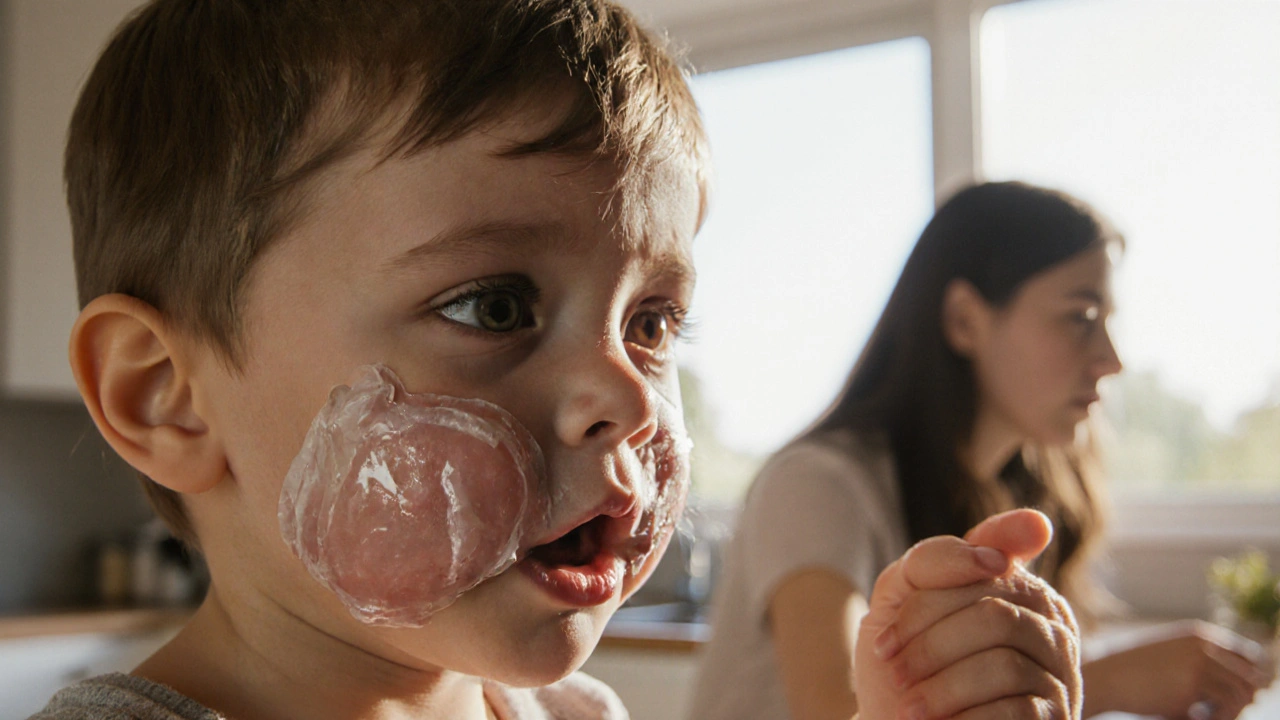A practical guide for parents covering causes, warning signs, diagnosis, treatment and home management of childhood angioedema.
Understanding Pediatric Angioedema: Causes, Diagnosis, and Treatment
When dealing with pediatric angioedema, a rapid swelling of the skin and deeper tissues in children. Also known as childhood angioedema, it often appears suddenly on the face, lips, or airway and can be scary for both kids and parents.
One major subtype that shapes the clinical picture is hereditary angioedema, a genetic condition caused by C1‑esterase inhibitor (C1‑INH) deficiency or dysfunction. This form runs in families, shows up in early childhood, and can lead to more severe attacks that affect the throat and cause breathing trouble. Recognizing hereditary angioedema early helps doctors choose targeted therapies like C1‑INH replacement or bradykinin‑blocking agents.
Common Triggers and How to Manage Them
Another frequent culprit is ACE inhibitor‑induced angioedema, swelling that occurs after taking medications that block the angiotensin‑converting enzyme. Even a single dose can trigger a reaction in susceptible children, so physicians must review any prescription history before starting these drugs. Prompt discontinuation and supportive care usually resolve the swelling within hours.
Underlying C1 esterase inhibitor deficiency, either inherited or acquired, reduces the body’s ability to control bradykinin levels. Low C1‑INH activity is the biochemical engine behind many angioedema attacks, and measuring its levels is a key diagnostic step. When the deficiency is confirmed, replacement therapy can dramatically cut the frequency and intensity of episodes.
Finally, urticaria, hives that often accompany or precede angioedema, adds another layer of complexity. While hives affect the superficial skin, angioedema involves deeper layers; together they can signal an allergic or autoimmune trigger that needs a combined antihistamine and anti‑inflammatory approach.
Understanding how these entities intersect—how hereditary angioedema influences severity, how ACE inhibitors act as external triggers, how C1‑INH deficiency drives the underlying mechanism, and how urticaria signals an allergic backdrop—gives families and clinicians a clearer roadmap for prevention and rapid response. Below you’ll find a curated collection of articles that dive deeper into each of these aspects, offering practical tips, latest treatment options, and expert advice to help you manage pediatric angioedema with confidence.

